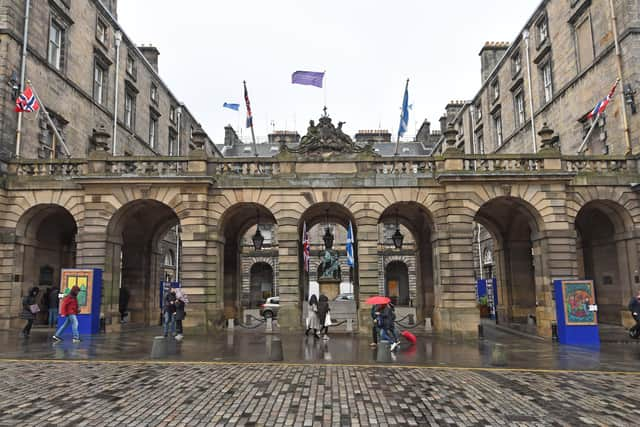Edinburgh on track to become net-zero by 2030 - but it's going to get more difficult
and live on Freeview channel 276
Edinburgh is on track to become a net-zero city by 2030, according to council chiefs. Emissions fell by seven per cent between 2019/20 and 2020/21 – but a key factor in that was the impact of the pandemic, with people travelling less and working from home. So there is a warning that it is going to get more difficult to keep to the target as time goes on.
Meanwhile, the council is taking steps to cut its own emissions, including the purchase of five electric bin lorries, retrofitting schools with energy-saving measures, banning air travel where a train is available and rolling out carbon literacy training for staff.
Advertisement
Hide AdAdvertisement
Hide AdThe council declared a climate emergency in 2019 and set a target of net zero emissions by 2030 for both the city and the council. A series of reports to Thursday’s (November 17) policy and sustainability committee spell out the progress in reducing both the council’s emissions and the emissions of the city as a whole.
Council leader Cammy Day said: "We are making good progress, but it will depend on what happens in the next year or two. We're one of the top three councils in the UK that's been recognised for their climate scorecard. But we need to continue investing to respond to the climate emergency. If we're serious about it, money needs to be put in as a priority from the council and the Scottish and UK governments.”
The report on city-wide emissions says: “Emissions have decreased by seven per cent between 2019/20 and 2020/21, based on the most up-to-date data available, or by 14 per cent since 2018/19, the baseline year. This exceeds the indicative target of 13 per cent which was set to achieve the interim 25 per cent reduction in 2022/23. This latest data reflects the significant impact that the Covid pandemic has had on the city, particularly on electricity consumption and transport.”
It goes on to say that city emissions in 2020/21 totalled an estimated 2.088 million tonnes of carbon dioxide equivalent. “The majority comes from gas and electricity consumption in buildings (domestic, industrial and commercial), representing 70 per cent of total emissions, followed by transport emissions (24 per cent). The share of domestic emissions increased from 53 to 56 per cent compared to last year, due to residents spending more time at home during national lockdowns.”
Advertisement
Hide AdAdvertisement
Hide AdThe report says that between 2019/20 and 2020/21, total electricity consumption dropped by 10 per cent. As people had to spend more time at home during lockdowns, electricity use at home increased by four per cent, but that was more than compensated for by a fall in consumption in non-domestic buildings of 19 per cent. Gas consumption saw a slight increase of two per cent.


The council’s own emissions remained steady compared to the previous year despite most activities slowly returning to normal. A report on council emissions details a range of measures the council is taking, including the retrofitting of Brunstane and Lorne primary schools and the allocation of £60m for work on a further 10 buildings; plans for the first two new-build schools to meet Passivhaus standards for energy efficiency at Currie High and Maybury Primary; the purchase of five new electric bin lorries; a ban on air travel by employees when a direct rail connection is available; an increase in the bike mileage rate from 25p to 45p per mile to incentivise low-carbon business travel; and the roll-out of carbon literacy training across the council.